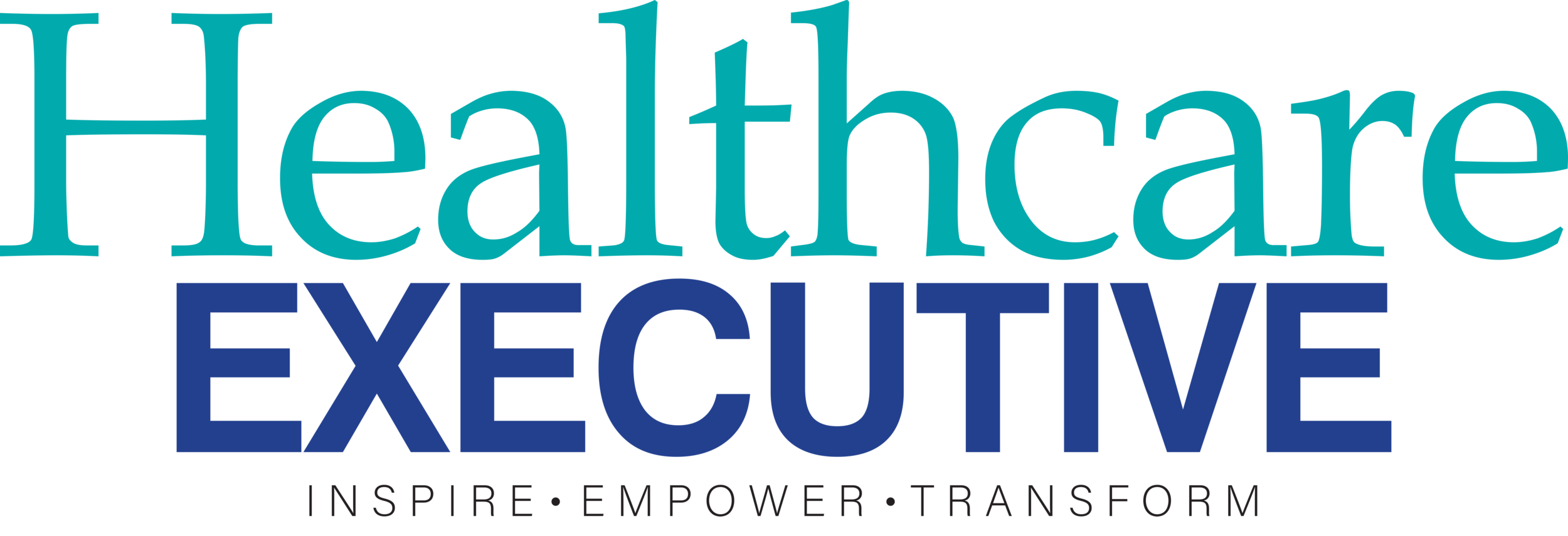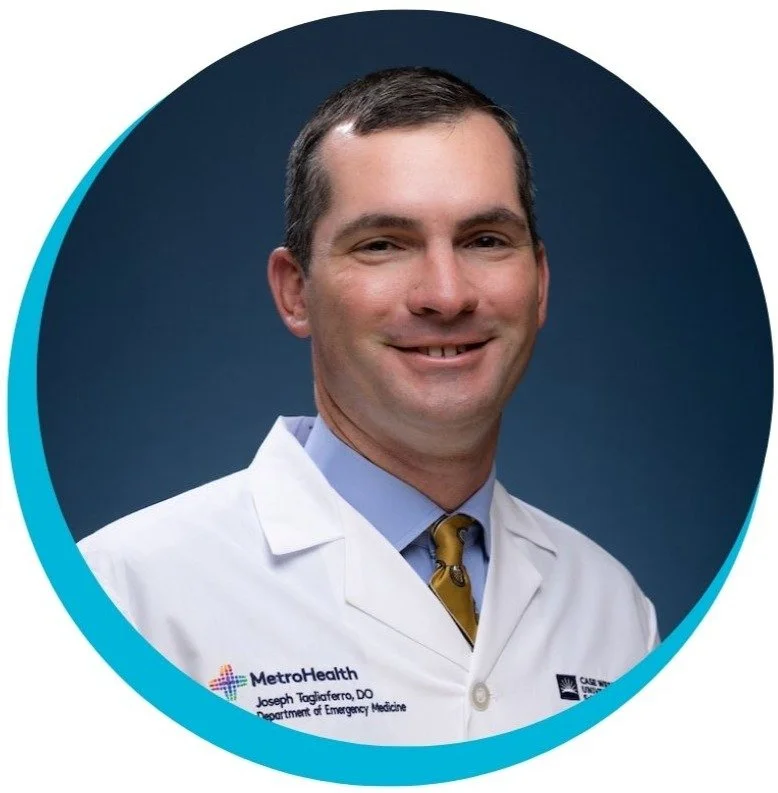Reimagining Emergency Medicine in India: Part One- Lessons from the US
By Arunima Rajan
Joseph Tagliaferro, DO is an emergency medicine physician at MetroHealth Health Systems.In an interview with Arunima Rajan, he talks about what India can learn from emergency medicine model of United States.
Where are you from and why do you do what you do?
I’m currently working as an Emergency Medicine Physician at MetroHealth Medical Center, right in the heart of downtown Cleveland. This isn’t just where I work—it’s where I grew up. Being from this city gives my work a much deeper meaning. I’ve always felt a strong sense of responsibility to give back to the community that shaped me.
There’s something really special about taking care of patients in the same neighborhoods where I spent my childhood. When someone walks into the emergency department, often during one of the most vulnerable and frightening moments of their life, I don’t just see a patient—I see a neighbor, a familiar face, a fellow Clevelander. That personal connection drives me to do everything I can to provide compassionate, timely, and high-quality care.
Working in emergency medicine here feels more like a calling than a job. It is a privilege to be there for people when they need it most, and even more so because I am doing it in the city I will always call home.
Joseph Tagliaferro, Emergency Medicine Physician, MetroHealth Health Systems
What are the strengths of the emergency medicine model of United States? In India, even ambulances most of the time, do not have equipments or healthcare professionals in the ambulance?
One of the biggest strengths of the emergency medicine model in the United States is its ability to provide rapid, around-the-clock access to care for anyone—regardless of their insurance status or ability to pay. That kind of accessibility, especially during life-threatening situations, is pretty unique and really important.
Another strength is how well-trained emergency physicians are. They're taught to handle everything from heart attacks and strokes to trauma and psychiatric crises—all under pressure, with very limited information. It's a high-stress environment, but the system is built to triage quickly and stabilize patients efficiently.
Also, the U.S. emergency departments are often well-equipped with advanced diagnostic tools like CT scanners, ultrasound, and lab services that can be used on the spot. That helps with making fast and accurate decisions.
Finally, the team-based approach is a strong point. Nurses, doctors, techs, and support staff all work closely together, often seamlessly, to get patients the care they need as fast as possible.
What is the usual response time, once they receive the call on 911?
Response times can vary a bit depending on the location, but generally, once a 911 call is made in the U.S., emergency services aim to respond as quickly as possible—often within 7 to 8 minutes for high-priority emergencies in urban areas. In more rural areas, it can take a little longer just because of the distance and fewer available resources.
What’s impressive is how coordinated the system is. As soon as you call 911, the dispatcher starts gathering critical information and often sends help even while you're still on the line. EMS teams are trained to mobilize super fast, and many areas have response time benchmarks they work hard to meet or beat.
So while exact times can vary, the goal is always fast, efficient care—because in emergencies, every minute truly counts.
Are there enough emergency physicians in the US? How does the government ensure that there are enough healthcare professionals? How do they make the career attractive for healthcare professionals?
That’s a great question—and a really important one. Right now in the U.S., there's actually a bit of a mixed picture when it comes to emergency physicians. In some urban areas, there might be an adequate or even competitive supply. But in rural or underserved regions, there’s still a noticeable shortage. So it’s not just about how many doctors we have—it’s also about where they’re practicing.
To help ensure there are enough healthcare professionals overall, the government supports medical education through things like funding residency programs, especially in high-need areas. There are also loan repayment programs like the National Health Service Corps, which offer financial incentives to work in underserved communities. For emergency medicine specifically, the government and professional organizations keep track of workforce trends and help guide policy and training accordingly.
As for making the career attractive—emergency medicine offers a fast-paced, diverse environment, and many doctors are drawn to the challenge and the chance to make a real difference in critical moments. That said, it can also be demanding, so there’s been more focus lately on improving work-life balance, supporting mental health, and adjusting shift structures to help avoid burnout.
What sort of triage system do you follow there? What are the strengths of the triage system?
In the U.S., most emergency departments follow something called the Emergency Severity Index (ESI), which is a five-level triage system. It helps nurses quickly sort patients based on how urgent their condition is and how many resources they’ll likely need. Level 1 is the most critical—like someone who’s not breathing or has no pulse—and Level 5 is the least urgent, like a minor rash or a simple medication refill.
One of the biggest strengths of this system is that it’s fast and efficient. Within just a few minutes of walking in the door, patients are assessed by a trained triage nurse who decides how quickly they need to be seen. This way, the most life-threatening cases get immediate attention, even if the waiting room is full.
Another strength is that it helps allocate resources wisely. Not every patient needs a bunch of tests or imaging, so ESI helps guide which cases should be prioritized for more intensive workups.
Also, because it's a standardized system, it promotes consistency across hospitals and regions. That means patients are more likely to receive fair and timely care, no matter where they show up.
So overall, the triage system in the U.S. is designed to keep emergency departments running as smoothly and safely as possible—even on the busiest days.
What can countries like India learn from US's emergency care model? Single emergency number, multiple stakeholders involved?
There’s definitely a lot that countries like India can take away from the U.S. emergency care model—especially when it comes to system coordination and access.
One of the most impactful features in the U.S. is the single emergency number—911—which connects people instantly to police, fire, or medical help. That kind of centralized
access makes a stark difference during critical moments. India has made progress with the 112-emergency number, but widespread awareness and consistency in response are still evolving. So, continuing to strengthen that single-point access and ensuring it's functional across urban and rural areas could be a big step forward.
Another thing the U.S. does well is involve multiple stakeholders—EMS, hospitals, trauma centers, public health, and even private services all work in coordination. This creates a more integrated response system, where patients can be triaged and routed to the right level of care, faster.
Also, the U.S. model emphasizes pre-hospital care, with paramedics and EMTs trained to provide life-saving interventions before the patient even reaches the hospital. That’s an area where expanding training programs and emergency transport infrastructure could really benefit countries like India.
Of course, the U.S. system has its own challenges, especially around cost and access for uninsured populations. So while there's a lot to learn, it’s also about adapting what works to the local context, population needs, and resource availability.
Which country has the best emergency care model in the world? US vs UK, which one is better?
That’s a tough one, because “best” really depends on what you value most in an emergency care system—speed, access, equity, outcomes, or cost-efficiency. Both the U.S. and UK have strong emergency care systems, but they take very different approaches, each with its own strengths.
In the U.S., emergency departments are highly advanced in terms of technology, training, and specialization. Care is accessible 24/7 to anyone who walks in, and emergency physicians are trained to handle a wide range of acute conditions quickly. There’s also strong coordination with EMS, trauma systems, and subspecialty care, which can lead to rapid, life-saving interventions—especially in complex or high-risk cases.
On the other hand, the UK’s NHS system emphasizes universal access and efficiency. Emergency care is free at the point of use, and the system is designed to avoid unnecessary ED visits by using GPs, NHS 111, and urgent care centers as filters. This helps manage resources more sustainably and ensures emergency departments can focus on the most critical cases.
So, which is better? It really depends on the lens you use. The U.S. excels in speed, specialization, and innovation, while the UK shines in equity, cost control, and population-level planning. Some might say the ideal system would take the best of both—high-quality care that’s both fast and universally accessible.
Got a story that Healthcare Executive should dig into? Shoot it over to arunima.rajan@hosmac.com—no PR fluff, just solid leads.


